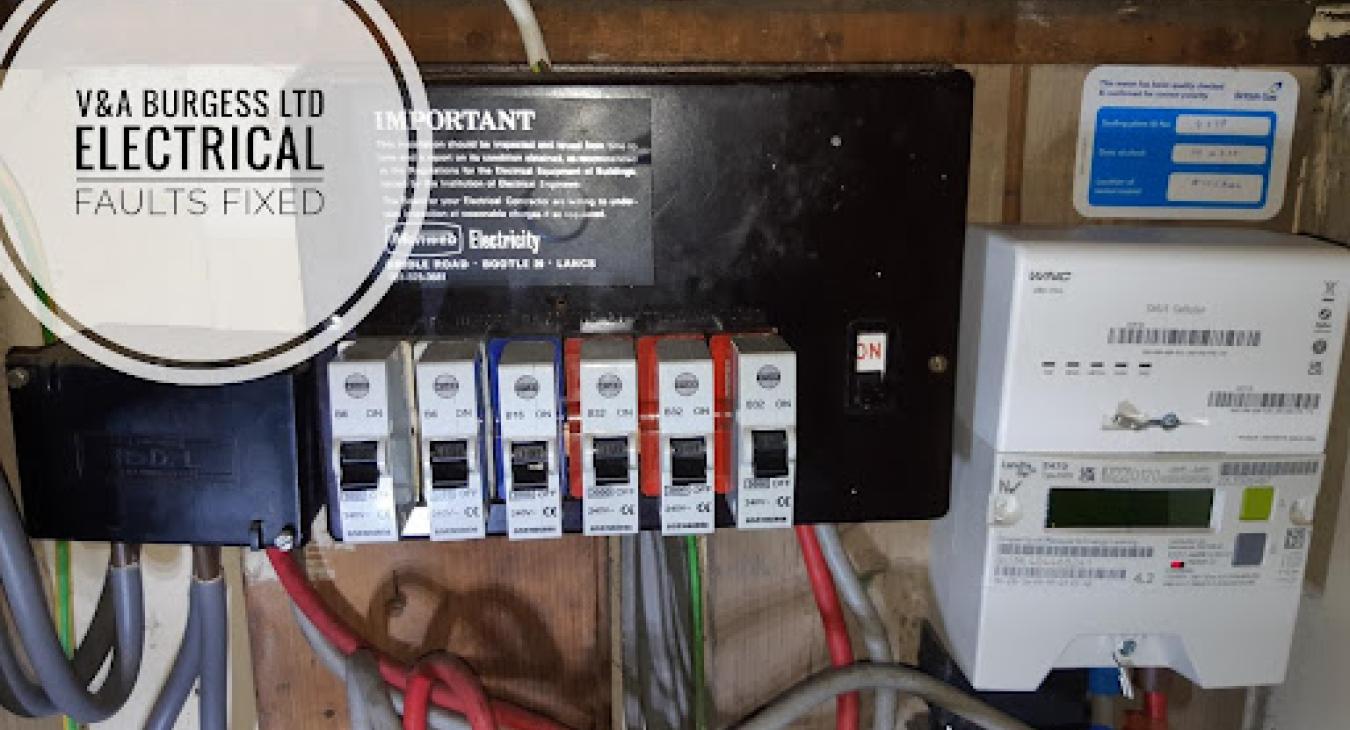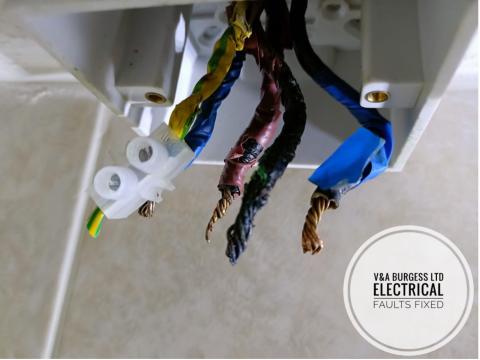
Table of Contents
- Consumer unit Vs. Fuse Box, what’s the difference?🤔
- Are fuse boxes illegal in the UK?⚠️
- What is the cost of replacing a consumer unit?💷
- What does an electrical inspection cost?💳
- How long does it take to remove a fuse box?⏱️
- How long does it take to install a new consumer unit?⏳
- What kind of tests does the electrician do when changing a consumer unit / inspection?📋
- Why are consumer units so expensive to be fitted?💭
1) Consumer unit Vs. Fuse Box, what’s the difference?🤔
A fuse box contains fuses in the form of enclosed tubular fuses or fuse carriers that contain fuse wire. A consumer unit contains circuit breakers, RCD devices and more modern equipment. Essentially, they both perform a similar function; however, a consumer unit is more modern, has more safety features generally and will be far more likely to be compliant with the most up to date safety wiring regulations over the fuse box.
Back to top2) Are fuse boxes illegal in the UK?⚠️
No. Fuse boxes are not illegal but it is likely that they do no longer comply with the most up to date safety wiring regulations and as such, you may be missing out on several key safety features that will benefit you and those living in the property. Such features could be electric shock protection by RCD devices, Arcing protection from AFDD devices and Surge Protection from SPD devices.
There is also the convenience of being able to reset a simple switch in the event of a typical light bulb failure tripping a circuit. With a fuse box, you would need to replace the fuse (if you can find one) or rewire the fuse carrier which in itself can be dangerous if it goes wrong.
A consumer unit with surge protection with cover removed:
3) What is the cost of replacing a consumer unit?💷
When replacing a consumer unit, it is strongly recommended that a thorough electrical inspection be carried out by your electrician prior to replacing the unit. This is to ensure that the new modern sensitive technology will work with your current wiring system. The only way to ascertain this is for your electrician to test the circuit and inspect the wiring installation beforehand. If a test is not carried out prior to the fitting of a new consumer unit, there could be issues with circuits tripping, not turning on or your electrician being unable to connect circuits If there are dangers that were not immediately obvious before the consumer unit change occurred.
That being said, a typical modern consumer unit installed professionally, notified to building control and signed off by your electrician will cost between £700 and £1200 pounds* including both electrical certificates that you should receive. This assumes that the inspection has been carried out and there were no problems to correct. (*At time of writing).
Back to top4) What does an electrical inspection cost?💳
Typically, an electrical inspection will cost between £195 and £370* and will take between half a day and a full day to perform correctly and safely. The resultant document produced will be of use to future home buyers, electricians and insurance companies should there ever be a question of the condition of the electrical system in your home. (*At time of writing) For more information on electrical inspections check our link here:
https://www.electricalfaultsfixed.co.uk/electrical-safety-checks-eicr
5) How long does it take to remove a fuse box?⏱️
Fuse box removal must be done carefully to avoid damaging the internal cabling and surrounding cabling of the electrical installation. Removing a fuse box safely and carefully can take a couple of hours including untangling cables, trimming damaged ends and any further testing that needs to be carried out at that stage of the works. Often, your electrician will leave the old fuse box with you for disposal unless the disposal of waste has been arranged prior to the work or is specifically stated in the quote.
Back to top6) How long does it take to install a new consumer unit?⏳
The installation of a new consumer unit can take several hours. Connections need to be correctly checked and torqued correctly according to the manufacturer’s instructions. This is to avoid loose connections or overly tight connections causing issues in the future. Wiring should be installed neatly and as much length as possible left on cabling in case of future additions or replacements. Wiring should be undertaken with skill and professionalism to make future testing easier, eliminate the risk of circuits being incorrectly labelled and to prevent the risk of overheating due to crowding.
Each of the protective devices in the consumer unit should sit evenly on the rails and should not prevent the cover from being easily installed. When protective devices are tightened onto the busbar under neath it is possible for devices to move and slip around creating uneven spacing and torque twist on the switches. This can create problems installing the cover and looks untidy. The larger the consumer unit, the more electrical circuits and the longer the job takes.
There are then final checks to undertake to ensure that the wiring and electrical circuits are safe for connecting to the new consumer unit. Once the final testing is complete, the electrician will be able to complete the electrical certification for the consumer unit and sign the work off to building control providing a certificate for that also.
Back to top7) What kind of tests does the electrician do when changing a consumer unit / inspection?📋
There are several different tests that are carried out during an inspection or during the swapping of a consumer unit.
- Earthing – continuity of protective conductors and safety earthing
- Insulation resistance testing of circuits to establish the condition of wiring internally
- Polarity checks on each circuit to make sure things are wired as they should be
- Testing of ring circuits
- External resistance checks and measuring of fault currents
- Earth loop impedance checking on internal circuits
- Testing of protective devices
The electrician also carries out a number of other (mostly visual) checks on your electrical installation to ensure that, so far as is practicable, all electrical accessories, wiring and circuits appear to be safe.
Back to top8) Why are consumer units so expensive to be fitted?💭
Actually, they are really not. When you consider how long typical consumer units last without servicing, maintenance or repair they are extremely good value and should be strongly considered for regular replacement along with the associated electrical inspections.
When you compare the cost of a consumer unit change to that of a gas boiler change and then consider the servicing costs of a boiler, its lifespan and replacement cost, the consumer unit looks like a good value, sensible prospect for ensuring that you are keeping the electrical system safe and up to date in your home. If you have any questions regarding new consumer units or anything electrical then get in touch with us today.
📧 Contact us.
Back to top










